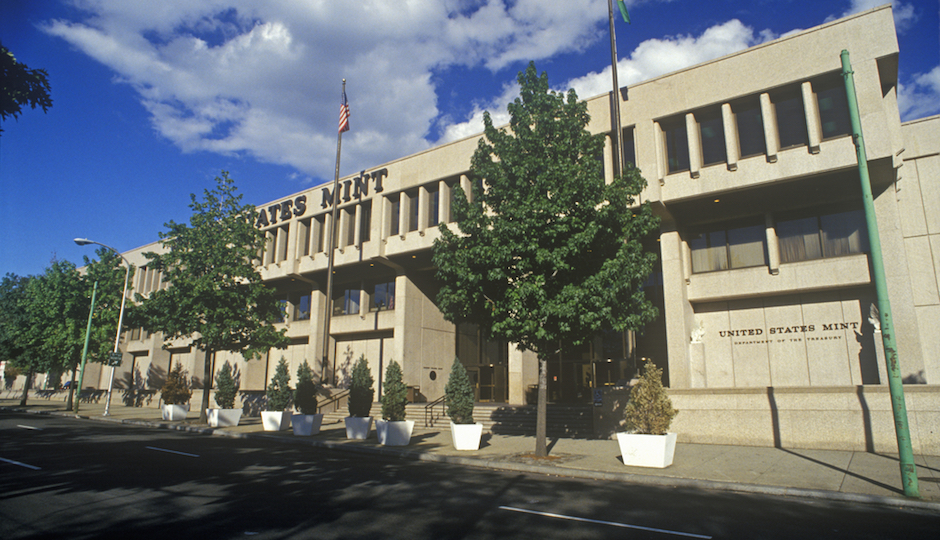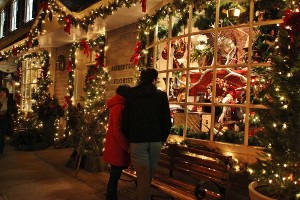5 Reasons You Should Take a Tour of the United States Mint

Shutterstock.com
Chances are, the coins jingling in your pocket or purse were probably made right here in Philadelphia at the United States Mint. Philly has been striking U.S. coinage since 1792, back when the City of Brotherly Love was still the nation’s capital. In those days, the U.S. Mint was housed in a complex of three small buildings situated at 631 Filbert Street, where once there stood a whiskey distillery. Horsepower helped run the presses that stamped out our nation’s early coins.
Today, the original facility commonly referred to as “Ye Olde Mint” is long gone. So, too, are the horse-operated coin presses. The U.S. Mint has moved its Philadelphia headquarters three times since 1833, when Ye Olde Mint struck its last coin. Today, the United States Mint stands as a mammoth-sized, 1969-vintage building at 151 North Independence Mall East, right in the heart of the Historic District and just two blocks from the site of the original U.S. Mint.
Visiting the U.S. Mint is a unique experience. It’s one of only two places in the United States where you can see the manufacture of our nation’s circulating coinage; there is a branch location of the U.S. Mint in Denver, but the other currently operating mint locations in San Francisco and West Point, NY, don’t offer public tours.
Tours at the Philadelphia Mint require no reservation and are self-guided. Much of the tour is a walk through a glass-walled corridor that flies about 40 feet above the coin press room, where most of the money-making action takes place. One of the first things you’ll witness on the tour are large copper and nickel coils measuring 13 inches wide and up to 1,500 feet in length being fed into a machine that cuts out coin-sized circular pieces of metal called blanks. These blanks will soon be processed into a machine that strikes designs on each blank coin, which you’ll see further along the corridor.
What else makes a trip to the U.S. Mint great? Well, if seeing tens of thousands of dollars in shiny, newly minted coins isn’t enough for you, I’ve laid out five reasons why the Mint is worth a visit:
1. It’s So Convenient to Major Heritage Attractions
The U.S. Mint is right across the street from National Constitution Center and roughly two blocks north of the Liberty Bell and Independence Hall. The Philadelphia Parking Authority offers an AutoPark garage at 41 6th Street, which is a short walk from the U.S. Mint. You’ll want to allow at least 1 hour to visit the Mint. So, at a minimum, that means you’ll spend $11.50 for 90 minutes of parking at that AutoPark—$16 for two hours. The Market-Frankford subway has a stop at 5th and Market streets, just one block from the Mint. If parking tolls and transit fares are bringing you down, don’t fret, because …
2. Admission to the U.S. Mint is Free!
See, so that’s not bad, right? Even if you shell out the $17 to cover the 10-hour parking fee along Independence Mall, at least you won’t need to pay a dime to get into the U.S. Mint. Remember, there are literally dozens of free things to do right in the heart of Philly, so you might as well build a whole day around your visit to the U.S. Mint. After all, staycations are fun.
3. Watch Money Get Made Right Before Your Very Eyes

The American Indian Head one-cent coin was produced by the United States Mint from 1859 to 1909 at the Philadelphia Mint. | Shutterstock.com
If you’ve ever been on a brewery tour or taken a trip over to Hersheypark to see the chocolate factory (the “real” factory tour closed in 1973, but at least you still get free chocolate at the end), you probably remember the joy of watching your favorite things come to life right before your very eyes. It’s pretty cool to see thousands of brand new coins roll off the presses and march off to circulation. Who knows—you may end up spending some of the very coins you saw get made. There’s just one problem … there are no free samples at the Mint.
- Philadelphia Mint Fun Fact: Ever wanted to know what coins were made in Philly? Look for a little “P” near the date on nickels, dimes, and quarters made since 1980. That “P” is called a mintmark, and it identifies that coin as a Philadelphia-minted piece. Pennies without a letter under their dates were also made here in Philadelphia. Most, but not all, U.S. coins made before 1980 that don’t have a mintmark were also made in Philadelphia; by the way, a “D” identifies Denver coins, “S” represents coins from San Francisco, and the rarely seen “W” is stamped on West Point coins.
4. Meet Peter the Mint Eagle
Well, sorta … You see, Peter was a bald eagle who lived at the old Philadelphia Mint during the 1830s. He became something of a local celebrity. The Mint’s staff would let him out of the building to fly over the city during the day. Unfortunately, the beloved eagle was injured when the machinery he was perching on suddenly started. Despite attempts to save the ailing bird, he died at the Mint. His body was preserved and is now located inside the current Mint near the entrance. Many of today’s coin designers will still study Peter when they need inspiration for creating coin designs involving the nation’s official bird.
5. The Philadelphia Mint is One of the Largest Coining Facilities in the World
How about that? In fact, until January 2009, the Philadelphia Mint was the largest coining facility in the world. The Philly Mint covers some five acres of land and produces an average of 1 million coins every 30 minutes. Sound like a lot of coins? It was in the old days, that’s for sure—it would have taken the original Philadelphia Mint three years to strike that many coins.
- Philadelphia Mint Fun Fact No. 2: More than 235 billion pennies have been minted in Philly since the first U.S. Mint facility opened here. Laid end to end, 235 billion pennies would wrap the earth more than 100 times.
Visiting the United States Mint
- Be sure tours are available on the day of your visit to the U.S. Mint. Generally, tour hours are from 9 am to 4:30 pm, Monday through Friday. The Mint is closed during Federal holidays except for the summer holidays of Memorial Day, Independence Day, and Labor Day. During summer, the U.S. Mint is also open on Saturdays from 9 am to 4:30 pm, and Sunday during those same hours on Memorial Day and Labor Day weekends. FYI: If you go on a weekend or holiday, you may not see anybody working the coining machines.
- Remember, the U.S. Mint security will ask all adults to show government-issued identification upon entry. The U.S. Mint is closed to the public during times when the Department of Homeland Security Threat Level is elevated to CODE ORANGE.
- If you or anybody else in your party has special needs, the officials at the U.S. Mint will be glad to assist. Just be sure to let arrival staff know of the special needs or request assistance in ahead of your visit by calling (215) 408-0110.
- While you’re at the Mint, make sure you swing by the David Rittenhouse Room on the mezzanine. That gallery, named for the first director of the United States Mint, is where you’ll find an extraordinary collection of rare and valuable old coins.
- Don’t forget to bring some spending money with you. There’s a unique gift shop where you can buy special-proof coin presentation sets and other interesting items. And, unlike many of those coin sets you see advertised on TV commercials at 3 in the morning, these are honest-to-goodness, made-at-the-U.S.-Mint ones that really do make memorable keepsakes.


